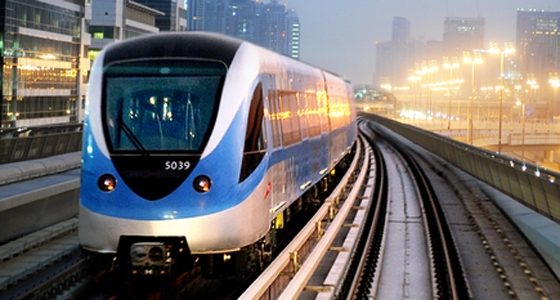Expanding public transport has become a priority for Dubai as it looks to accommodate both a rapidly rising population and the millions of visitors expected to attend World Expo 2020. Extensions to the metro, a new airport and increasing use of marine transport all aim to improve connectivity within the emirate and promote additional use of public transport.
Although Expo 2020 is not the primary reason for the transport upgrades, most should nevertheless be complete by 2020. This is particularly useful as Dubai anticipates 20m regular tourists and the first of 25m Expo visitors that year. The extensions will also service Dubai’s increasing population, which is forecast to grow to around 3m by 2020.
With the heavy focus on smart systems to power most of the new developments, ICT companies with experience in transportation management should be well poised to benefit from the coming investments. Construction and transport machinery companies will also be looking towards future tenders from the Roads and Transport Authority (RTA) for project management and the delivery of the buses and rail carriages needed to complete the projects.
New connections
Dubai has already begun rolling out several major transport projects. The national public transport drive includes plans to expand the Dubai Metro by 50% over the next few years and construct a new spur that will connect the Red Line along Sheikh Zayed Road to the Expo 2020 site near Al Maktoum International Airport. The present network, which was opened in September 2009, is 75 km long and has 47 stations. If everything goes according to schedule, Dubai’s rail network will be 421 km long and have 197 stations by 2030.
The metro is already the most heavily used of the emirate’s public transport services, carrying around 500,000 passengers daily. Figures show that passengers on the integrated network reached 440.6m in 2013, up from 346.5m in 2011, according to the RTA.
Under the plan, the green line will be extended by 20.6 km, almost doubling its current length, while 3.5 km of track will be added to the red line. In a separate project, a 15-km line will provide a route to the Al Maktoum International Airport and the site of Expo 2020. The extension will provide a welcome service to key locations, including Mirdif City Centre, the Shurooq and Ghuboor developments, Dubai Festival City, Ras Al Khor and International City.
Scheduled to begin operating on November 11, the Dubai Tram is also a key component of the emirate’s bid to increase public transport services. Approximately 27,000 passengers are expected to use the tram daily when it begins operating, with the number forecast to reach 66,000 by 2020, according to official estimates.
Across the water
The extension of Deira Creek is another major project in the pipeline. The initiative, which is still some way from completion, will see the creek extended so that it runs from Business Bay to Jumeirah, while encircling Bur Dubai. The number of water taxis serving the creek will be boosted in preparation for heightened activity in the area. Officials estimate that the extension will eventually create more than 8000 sq meters of development space capable of housing up to 450 restaurants and four new hotels by 2016.
Dubai has also moved to shore up its marine transport services elsewhere in the emirate. Additional water taxi routes have opened in Dubai Creek and Dubai Marina, with others scheduled to follow. September witnessed the opening of a new high-speed ferry service between Al Ghubaiba and Marina Mall, with route extensions planned for Al Mamzar, Jumeirah, World Island and Palm Island.
Private sector participation
Tenders for infrastructure developments to be undertaken for the Expo will be issued in the first quarter of 2015, according to a recent announcement from the government. Reem Al Hashimi, the minister of state and managing director of the Higher Committee for Dubai World Expo 2020, told Gulf News infrastructure investment for the expo is expected to cost between $6.2bn and $8.7bn.
Estimates over the likely costs of infrastructure upgrades vary greatly. HSBC forecasts that Dubai’s government will have to spend $8bn on infrastructure spending linked to the Expo, which includes the development of the Expo 2020 site, as well as road and rail improvements. This would be complemented by a further $10bn of private sector spend, it added.
However, estimates from Deutsche Bank come in much higher, at about $43bn, including likely private sector spend, retail, hotels and real estate, as well as projects which would have been built even if the bid had been unsuccessful.
Research from investment company EFG-Hermes shows that the successful bid could add 0.5-1.0% to UAE’s real GDP growth in the next few years, accelerating closer to the event as construction activity picks up.
Oxford Business Group
10 November
























































